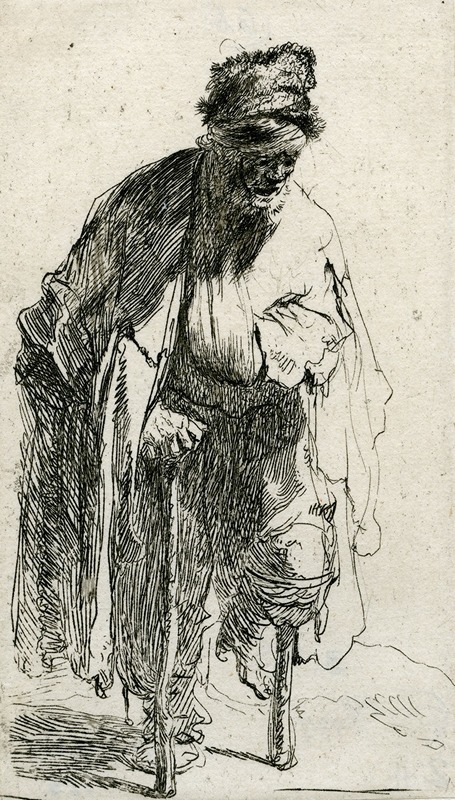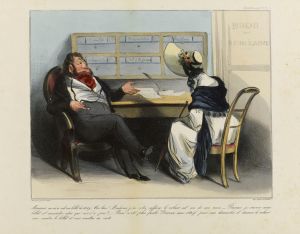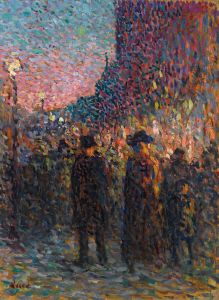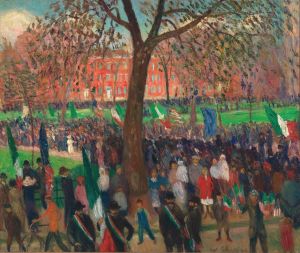
Beggar with a Wooden Leg
A hand-painted replica of Rembrandt van Rijn’s masterpiece Beggar with a Wooden Leg, meticulously crafted by professional artists to capture the true essence of the original. Each piece is created with museum-quality canvas and rare mineral pigments, carefully painted by experienced artists with delicate brushstrokes and rich, layered colors to perfectly recreate the texture of the original artwork. Unlike machine-printed reproductions, this hand-painted version brings the painting to life, infused with the artist’s emotions and skill in every stroke. Whether for personal collection or home decoration, it instantly elevates the artistic atmosphere of any space.
"Beggar with a Wooden Leg" is an etching by the renowned Dutch artist Rembrandt van Rijn, created in 1630. Rembrandt, one of the most influential figures in the history of art, is celebrated for his innovative use of light and shadow, as well as his keen ability to capture the human condition. This particular work is a testament to his skill in etching, a medium in which he excelled and contributed significantly.
The etching depicts a beggar, a common subject in Rembrandt's early works. The figure is shown with a wooden leg, a detail that adds a poignant element to the image, highlighting the hardships faced by the impoverished during the 17th century. Rembrandt's interest in depicting beggars and the lower classes was part of a broader trend during the Dutch Golden Age, where artists sought to capture the diversity of human experience and the realities of everyday life.
In "Beggar with a Wooden Leg," Rembrandt employs his mastery of line and texture to convey the roughness of the beggar's clothing and the worn appearance of his wooden leg. The etching is relatively small, typical of Rembrandt's works in this medium, yet it is rich in detail and expression. The beggar's face is etched with lines that suggest age and hardship, yet there is a dignity in his posture and expression that evokes empathy from the viewer.
Rembrandt's etchings are notable for their technical precision and emotional depth. In this work, he uses a technique known as drypoint, which involves scratching the image onto a plate with a sharp needle. This method allows for a range of tones and textures, which Rembrandt exploits to great effect. The resulting image is both detailed and dynamic, with a sense of immediacy that draws the viewer into the beggar's world.
The subject matter of beggars and the impoverished was not uncommon in Rembrandt's oeuvre. He often depicted individuals from the fringes of society, imbuing them with a sense of humanity and individuality. This approach reflects the broader humanist trends of the time, where there was an increased interest in the lives and experiences of ordinary people.
"Beggar with a Wooden Leg" is part of a series of etchings by Rembrandt that focus on beggars and street life. These works are valued not only for their artistic merit but also for their social commentary. They provide insight into the social conditions of the time and Rembrandt's own interest in the human condition.
Today, Rembrandt's etchings, including "Beggar with a Wooden Leg," are studied for their technical brilliance and their contribution to the development of printmaking as an art form. They are housed in various collections around the world, where they continue to be appreciated by art historians and enthusiasts alike. Rembrandt's ability to capture the essence of his subjects, regardless of their social standing, remains a testament to his enduring legacy as one of the greatest artists of the Dutch Golden Age.


















